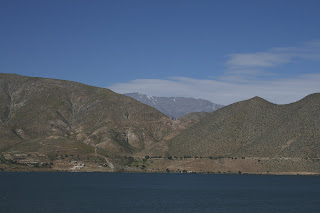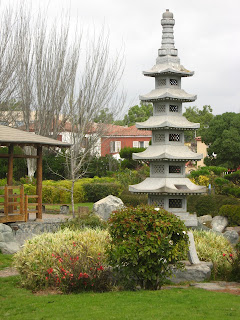
This week, my second at Gemini, I moved out of my temporary space into my permanent office. My desk isn't quite ready (there is still quite a bit of musical chairs going on) but I settled into another empty spot in the office, just to get the feel for it. The picture above is actually a view from my office; I would say that looking out over the Pacific Ocean is a fairly large upgrade from staring at the back end of a football stadium.
I also got to meet and chat with my new office mate, Etienne. Etienne found out that I was interested in nature photography and very enthusiastically showed me his extensive birding site. His photos are pretty remarkable; I'm fairly sure he could have a career as a nature photographer if he wanted. Instead he studies brown dwarfs, objects that are just a bit larger than Jupiter-like planets and just a bit smaller than the smallest stars. (He's very good at that too!) He also works on NICI, a special new instrument at Gemini that will find planets around stars other than our sun. Besides the bird pictures, he's also got quite a bit of photography of his baby daughter, Heloise, and his wife Myriam.
Almost immediately after settling into my office, I found out that I would be going up for my first solo run at the telescope at the beginning of December. Since I know absolutely nothing about the instruments, the telescope, etc. I decided that I needed to schedule my first training run as soon as possible. Fortunately, Etienne is observing next week and he's agreed to show me the ropes. So I'm already planning my first nighttime trip to the mountain!
Of course, I've met many new people besides Etienne; at Gemini there are plenty of opportunities to socialize. Every Wednesdays, the science staff gets together for "Science Coffee" and chats (over coffee and cookies, of course!) about interesting science results that we've seen or (hopefully) produced. Gemini also has a monthly meeting to celebrate all the birthdays that took place during the month. The "Birthday Celebration" is followed by a nice spread of food including sushi, cake, empanadas, etc. It's clear that they work very hard on a very positive morale here and go out of their way to make sure everyone knows each other and feels important to the observatory.
So far I'm really enjoying my time here. It will be interesting to see what next week brings!
I also got to meet and chat with my new office mate, Etienne. Etienne found out that I was interested in nature photography and very enthusiastically showed me his extensive birding site. His photos are pretty remarkable; I'm fairly sure he could have a career as a nature photographer if he wanted. Instead he studies brown dwarfs, objects that are just a bit larger than Jupiter-like planets and just a bit smaller than the smallest stars. (He's very good at that too!) He also works on NICI, a special new instrument at Gemini that will find planets around stars other than our sun. Besides the bird pictures, he's also got quite a bit of photography of his baby daughter, Heloise, and his wife Myriam.
Almost immediately after settling into my office, I found out that I would be going up for my first solo run at the telescope at the beginning of December. Since I know absolutely nothing about the instruments, the telescope, etc. I decided that I needed to schedule my first training run as soon as possible. Fortunately, Etienne is observing next week and he's agreed to show me the ropes. So I'm already planning my first nighttime trip to the mountain!
Of course, I've met many new people besides Etienne; at Gemini there are plenty of opportunities to socialize. Every Wednesdays, the science staff gets together for "Science Coffee" and chats (over coffee and cookies, of course!) about interesting science results that we've seen or (hopefully) produced. Gemini also has a monthly meeting to celebrate all the birthdays that took place during the month. The "Birthday Celebration" is followed by a nice spread of food including sushi, cake, empanadas, etc. It's clear that they work very hard on a very positive morale here and go out of their way to make sure everyone knows each other and feels important to the observatory.
So far I'm really enjoying my time here. It will be interesting to see what next week brings!






















































